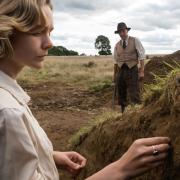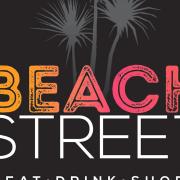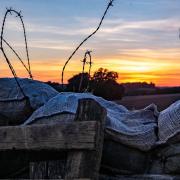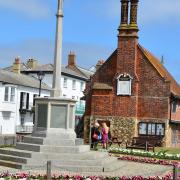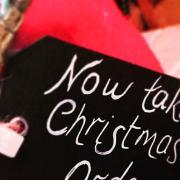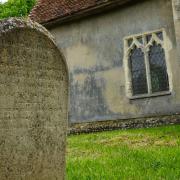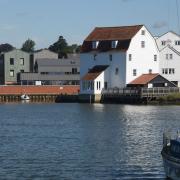Lessons at home? Start by testing your knowledge of Suffolk’s sea stories. There are some decidedly fishy connections. . . WORDS: Lindsay Want

Suffolk is full of fishy tales to fall for hook, line and sinker. From snaking freshwater-types in the Fens to little silver darlings off the Lowestoft coast, all sorts of slippery protagonists start to surface once you go fishing about a bit.
Make room for a mollusc and crustacean or two and Suffolk’s your oyster, so to speak.
Maggi Hambling’s Scallop on Aldeburgh beach is a story in itself. The words upon it are from a tale of fisher folk by local poet George Crabbe.
Fact or fiction, there are simply so many stories swimming around out there and who knows, they might even be able to teach us (and the kids) some lessons…

Lesson 1 — History (& Computer Studies)
If King John dying from a surfeit of East Anglian eels sounds a bit fishy to you, you’ll be even more surprised when a quick trawl on the internet suggests that Henry I possibly did too.
Yet somehow it doesn’t seem such an unlikely tale when the reliable old Domesday Book tells stories of Southwold folk paying 20,000 herrings a year in rent to The Abbey of St Edmund.
In 1259, Richard de Clare still thought that a worthy prize and willingly swapped his Mildenhall manorlands for the seaside spot, even when its income had dropped by some 3,000 little wrigglers. But Poor Richard wouldn’t have got much joy looking for a catch closer to his Breckland home.

Lesson 2 — Foreign Languages
Promising though it sounds, Herringswell in the Brecks is a total fish out of water, named after ‘Hyringa’ and his Anglo-Saxon tribe of early Britons.
The village sign enjoys sharing the joke, but in Lowestoft’s hinterland where sea-faring sorts and fishing grounds have never been that far away, there’s a similarly slippery fish. Herringfleet remembers ‘Herela’, another Anglo-Saxon ancestor who sailed in to settle down on the ‘flet’.
Today, those ‘tidal waters by the river’ are now beautiful marshlands in the southern Broads and home to a tiny round-tower church, full of exquisite continental stained glass shipped over during the French Revolution, plus a smock-style drainage mill with an appropriately boat-shaped cap.

Lesson 3 — Domestic Science
Suffolk’s definitely got a bone or two to pick with history. Just what are whalebones doing, propped up like a triumphal arch into Great Wratting’s Red Lion near Haverhill? Riverside Rattlesden has some too, although they could be replica crux beams from one of the village’s hugely historic houses.
In Aldeburgh Moot Hall Museum, another mighty whalebone was The Three Mariners Inn sign from long-gone Slaughden Quay. But what’s with the gold fish swimming around in all directions on top of Moulton church near Newmarket?
In Troston, north of Bury St Edmunds, a crude cod-ly effigy carved by medieval hands on the pillars inside St Mary’s church could be a mark of faith – or a sign of rumblings of discontent during a long, lunch-delaying service?
Back then, Fridays were fasting days and, with meat off the menu, fish was a must. Chefs had other options, but permissible ‘meat-free’ alternatives such as beavers, barnacle geese and puffins, were clearly in short supply in Suffolk. No wonder every manor house and castle, every abbey and priory had its own fishponds.
You’ll find them by Framlingham Castle Mere, Eye’s Abbey Farm or imagine them in ‘The Crankles’, between the Lark and the Linnet in the Abbey Gardens at Bury St Edmunds. The Abbot had separate ‘stew’ ponds for his own private fish stock in the beautiful waters of Babwell Fen Meadows, but that later turned out to be a very different kettle of fish.

Lesson 4 — Philosophy
Why are the Abbot’s fishponds now known as Mermaid Pits? Legend enjoys confusing fish and flesh, with the suggestion that a luckless, love-sick maiden perished here. Maybe our Suffolk ancestors always saw what they wanted to see, like mermaids rather than seals swimming off the coast, even if the local dialect, ‘sea-plodder’ (porpoise), hardly substantiates such graceful claims.
What was the artist behind the ancient wall-painting at Grundisburgh church thinking, when he painted the beautiful fish dancing round St Christopher’s feet? And why is there a medieval mermaid bench-end in St Mary’s Dennington, and a buxom mermaid beauty in fashionable terracotta above Nicholas Garney’s 1599 brass memorial outside All Saints’ Ringsfield?
Mermaids were metaphors for pride and temptation – you’ll find one wagging her finger on the Sailors’ Reading Room sign at Southwold.
Perhaps she’d strayed down the coast and shown an interest in Suffolk’s legendary merman, the ‘Wild Man of Orford’ who was once incarcerated in the castle dungeon.

Lesson 5 — Music
“What shall we do with the herring’s head? We’ll make them into loaves of bread…” goes the local folk song. When it comes to real little darlings, nothing quite compares to the shoals of silver herring which brought tides of prosperity to Suffolk’s shores.
Suffolk’s coast saw millions of smoked, pickled or salted ‘silver darlings’ exported in all directions. “Of all the fish that are in the sea, the herring is the fish for me…’ follows the rousing chorus, and when it’s sung in Southwold’s Harbour Inn on Blackshore Quay, you can almost smell the ghost of the ‘kipperdrome’, the octagonal fish-market which stood by the beach in the early 1900s, named somewhat tongue-in-cheek after Great Yarmouth’s then new attraction, the ‘Hippodrome’ circus.
There are plenty of songs too about the burly Scottish fisher girls who, lodged locally for the season, packed the herring as the fleet followed the silver shoals and proved a challenging catch for the local lads.

Lesson 6 — Maths
Even if some of Suffolk’s fishy stories don’t add up, you can count on Lowestoft to have fishy stuff by the score.
Carved through the cliff, some of the town’s ravine passageways or ‘Scores’ were ancient thoroughfares and, although the cottages and acres of herring pickling plots known as the ‘Beach Village’ were finally cleared after the 1953 floods, 12 scores still remain – that’s 401 steps’ worth, if you want to climb them all and do the maths.
Red herring waymarkers and storyboards lead the way, past a number of original cottages on Spurgeon Score, telling tales like the one about ‘Happy’ Welham of Lighthouse Score, who drank like a fish and charged passers-by tuppence a time to see an unexploded naval shell.

Lesson 7 — English & Drama
Find your Suffolk sole mate in the writings of former Orford resident Ruth Rendell. Reimagine the heritage coast around Dunwich with the words inspired by PD James’ special seaside plaice.
Or have a whale of a time with the feast of creative coastal titles assigned to beach huts on proms from Lowestoft and Southwold to Felixstowe (Salty Groyne is a particular favourite). Inland, Bungay was indeed once a port, but its Fisher Theatre from 1828 is still a red herring.
Like Halesworth’s current Rifle Hall and other venues long-since disappeared from Beccles, Sudbury, Lowestoft, Woodbridge and Newmarket, the Victorian theatres were simply founded by Mr Fisher.
Been taking notes? Hope so – you don’t want to find yourself in detention, doing lines in your neatest joined-up whiting!




